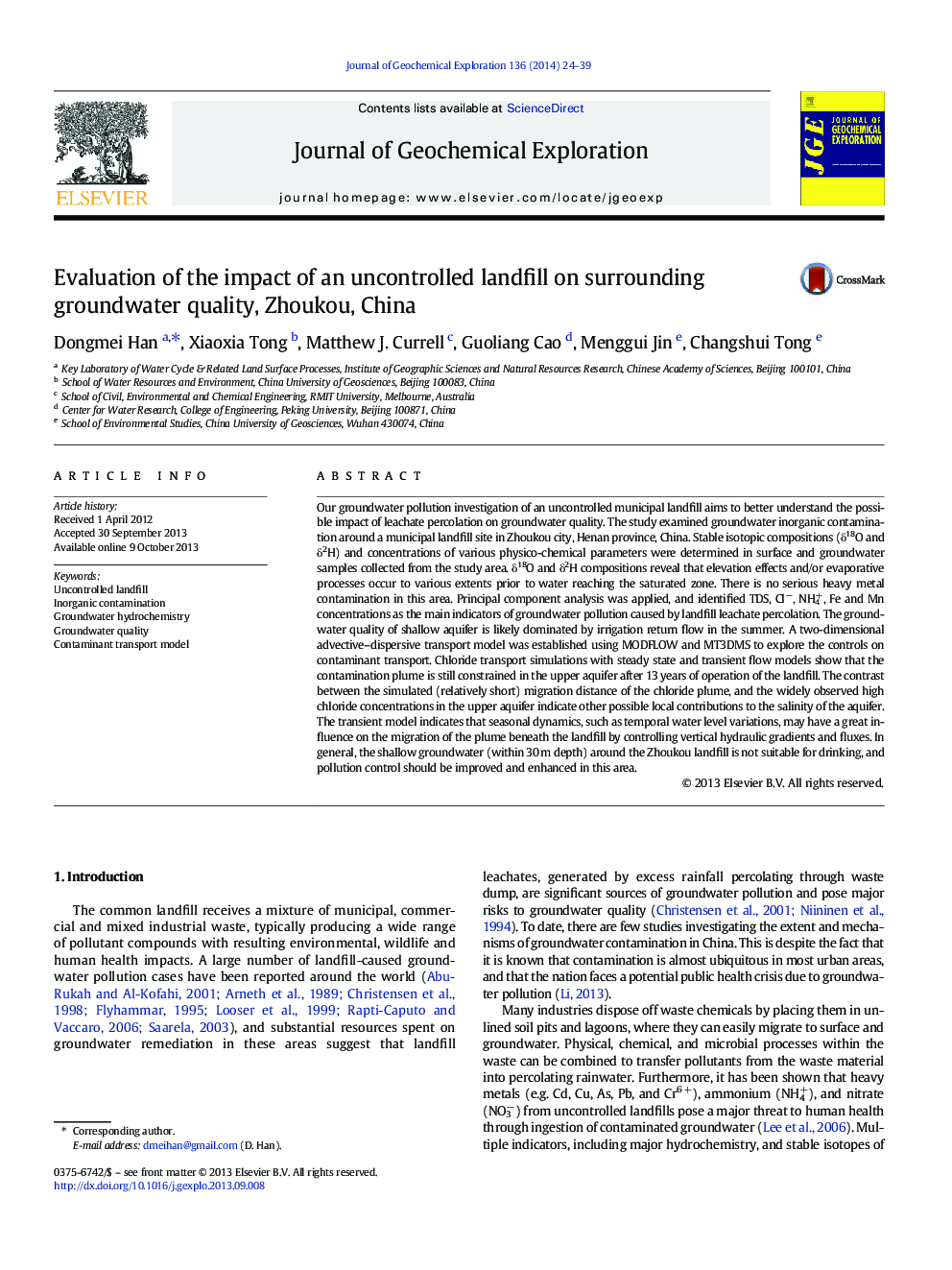| Article ID | Journal | Published Year | Pages | File Type |
|---|---|---|---|---|
| 4457498 | Journal of Geochemical Exploration | 2014 | 16 Pages |
•Evaluate potential sources of inorganic pollutants in groundwater around landfill.•Identify the major contaminants caused by landfill leachate percolation.•Conduct 2D contaminant transport model to simulate groundwater flow around landfill.•Put forward preventative strategies for improving groundwater quality.
Our groundwater pollution investigation of an uncontrolled municipal landfill aims to better understand the possible impact of leachate percolation on groundwater quality. The study examined groundwater inorganic contamination around a municipal landfill site in Zhoukou city, Henan province, China. Stable isotopic compositions (δ18O and δ2H) and concentrations of various physico-chemical parameters were determined in surface and groundwater samples collected from the study area. δ18O and δ2H compositions reveal that elevation effects and/or evaporative processes occur to various extents prior to water reaching the saturated zone. There is no serious heavy metal contamination in this area. Principal component analysis was applied, and identified TDS, Cl−, NH4+, Fe and Mn concentrations as the main indicators of groundwater pollution caused by landfill leachate percolation. The groundwater quality of shallow aquifer is likely dominated by irrigation return flow in the summer. A two-dimensional advective–dispersive transport model was established using MODFLOW and MT3DMS to explore the controls on contaminant transport. Chloride transport simulations with steady state and transient flow models show that the contamination plume is still constrained in the upper aquifer after 13 years of operation of the landfill. The contrast between the simulated (relatively short) migration distance of the chloride plume, and the widely observed high chloride concentrations in the upper aquifer indicate other possible local contributions to the salinity of the aquifer. The transient model indicates that seasonal dynamics, such as temporal water level variations, may have a great influence on the migration of the plume beneath the landfill by controlling vertical hydraulic gradients and fluxes. In general, the shallow groundwater (within 30 m depth) around the Zhoukou landfill is not suitable for drinking, and pollution control should be improved and enhanced in this area.
